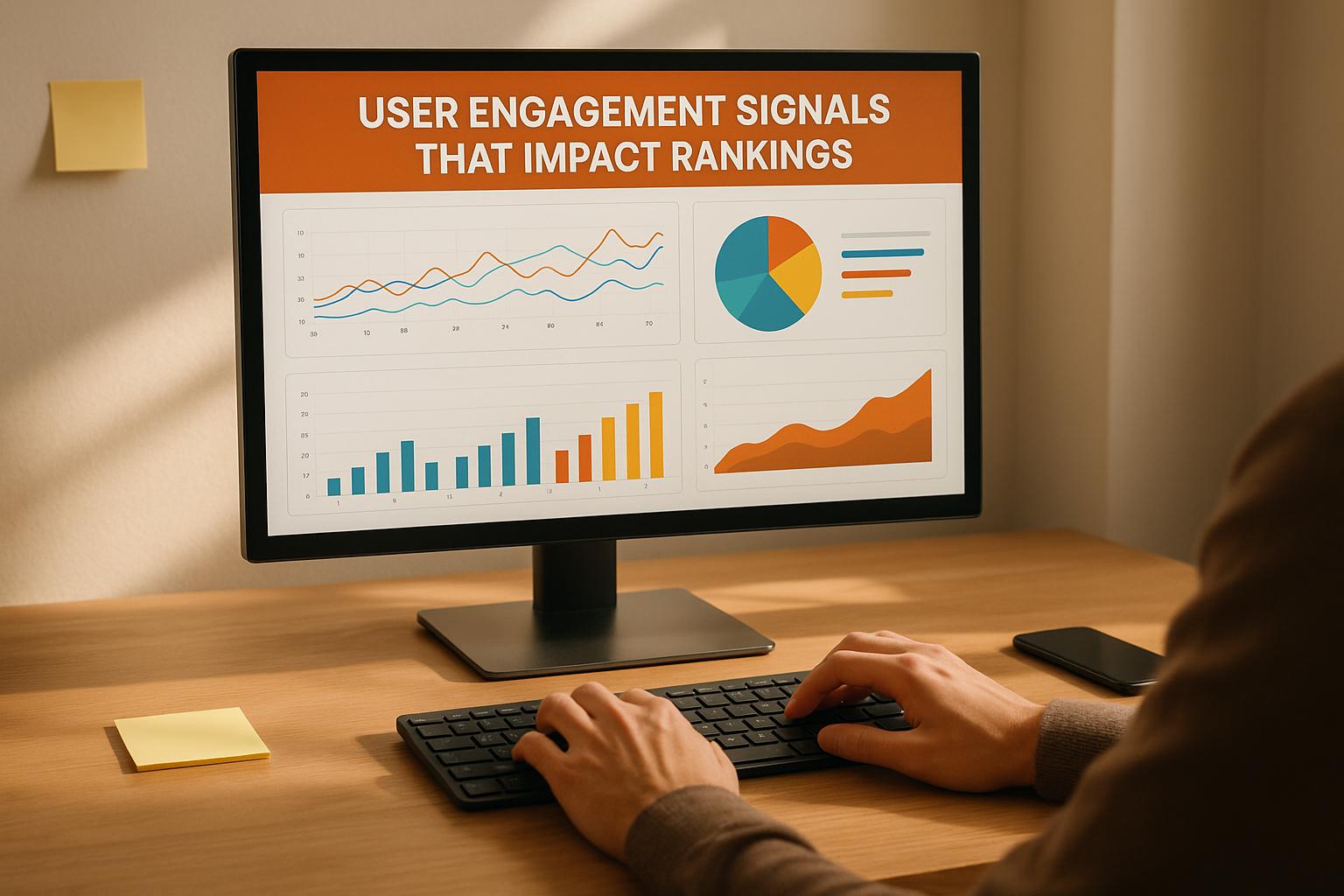

5 Multivariate Testing Tools for Optimization

5 Multivariate Testing Tools for Optimization
 29-01-2025 (Last modified: 08-10-2025)
29-01-2025 (Last modified: 08-10-2025)
Running one test at a time is so 2020… In 2026, the smartest marketers and product teams are using multivariate testing tools to find not just what works, but why.
Instead of changing one headline and waiting weeks for results, multivariate testing lets you experiment with multiple elements at once — headlines, CTAs, layouts, even colors — to discover the perfect combination that drives conversions.
The best part is that AI-powered tools like PageTest.AI can now generate and test these variations automatically, saving you hours of manual setup while delivering deeper insights.
We’re here to help you learn:
-
How multivariate testing differs from standard A/B testing.
-
Discover the top tools for faster, data-driven optimization.
-
See how AI and automation are changing the future of testing.
-
Find out how to pair testing with engagement tracking for better results.
Because when you stop guessing and start testing everything, things get interesting…
“Multivariate testing is where real growth teams separate intuition from data-backed truth.” CXL Institute
What Are Multivariate Testing Tools?
Multivariate testing tools are platforms that enable you to test multiple variations of different elements on your digital assets, such as headlines, images, CTAs, and layouts. These tools help you understand how these elements interact and which combinations work best for your audience.
Unlike A/B testing, which focuses on a single variable, multivariate testing examines the impact of multiple variables simultaneously, offering a more holistic approach to optimization.

Why Use Multivariate Testing Tools?
Here are some reasons why multivariate testing tools are essential for modern businesses:
- Holistic Optimization: They provide insights into how multiple elements interact, enabling comprehensive improvements.
- Data-Driven Decisions: Businesses can rely on real user behavior rather than assumptions.
- Improved ROI: By identifying the best-performing combinations, you can maximize the impact of your marketing and design efforts.
- Time Efficiency: Test multiple variables in one experiment, saving time compared to sequential A/B tests.
“Businesses that use structured multivariate testing see up to 300% higher conversion improvements than those running single-variable A/B tests.” Invesp, 2025
Top 5 Tools in the Market
Here’s a roundup of the best multivariate testing tools available today:
1. PageTest.ai
Overview: PageTest.ai is an AI-powered platform that simplifies multivariate testing for businesses of all sizes. It combines ease of use with powerful features, making it ideal for marketers and developers alike.
Features:
- AI-generated test variations for headlines, CTAs, and more.
- Intuitive dashboard for analyzing results.
- Supports both multivariate and A/B testing.
- Seamless integration with popular analytics tools like Google Analytics.
Benefits:
- Quick setup and user-friendly interface.
- Free plan available for up to 100,000 tests per month.
- AI insights speed up optimization processes.
Best For: Small to mid-sized businesses looking for a cost-effective yet robust solution.
2. Optimizely
Overview: Optimizely is a leader in the experimentation space, offering advanced multivariate testing capabilities for enterprise-level businesses.
Features:
- Real-time analytics and predictive insights.
- Full-stack testing for websites, mobile apps, and server-side experiments.
- Advanced targeting and personalization options.
Benefits:
- Scalable for large organizations.
- Detailed reporting to guide data-driven decisions.
- Excellent support and resources for onboarding.
Best For: Enterprises and large businesses with complex testing needs.
3. VWO (Visual Website Optimized)
Overview: VWO is a versatile platform that combines multivariate testing with behavioral insights like heatmaps and session recordings.
Features:
- Visual editor for creating test variations without coding.
- Advanced segmentation for targeted testing.
- Multivariate, A/B, and split URL testing capabilities.
Benefits:
- Combines testing with user behavior analytics.
- Easy-to-use interface suitable for marketers.
- Flexible pricing plans.
Best For: Businesses that want an all-in-one platform for testing and user behavior analysis.

4. Adobe Target
Overview: Adobe Target is part of the Adobe Experience Cloud, offering enterprise-grade multivariate testing and personalization tools.
Features:
- AI-driven recommendations and automated decision-making.
- Integration with Adobe’s suite of tools for seamless workflows.
- Support for server-side, client-side, and hybrid testing.
Benefits:
- Highly customizable for large-scale projects.
- Ideal for businesses already using Adobe’s ecosystem.
- Powerful targeting and segmentation options.
Best For: Enterprises with advanced testing needs and a budget to match.
5. AB Tasty
Overview: AB Tasty is a user-friendly platform designed for marketers and product teams, focusing on multivariate and A/B testing.
Features:
- Drag-and-drop editor for creating variations.
- Built-in personalization tools.
- Integration with analytics tools like Google Analytics and HubSpot.
Benefits:
- Great for mid-sized businesses.
- Focuses on enhancing user experience.
- Flexible pricing options.
Best For: Businesses looking for a balance between ease of use and functionality.
How to Choose the Right Multivariate Testing Tool
Selecting the right tool depends on your business size, goals, and technical requirements. Here are some factors to consider:
- Ease of Use:
- Does the platform offer a visual editor or require coding?
- How intuitive is the setup process?
- Features:
- Does the tool support both multivariate and A/B testing?
- Are there additional features like heatmaps or behavioral insights?
- Integration:
- Can it seamlessly integrate with your existing analytics and CRM tools?
- Scalability:
- Does the platform support your current and future needs?
- Is it suitable for high-traffic sites?
- Pricing:
- Does it fit within your budget?
- Are there flexible pricing plans or free trials?
“Teams that run at least one experiment per week are twice as likely to hit their annual conversion goals.” Hubspot 2025
Benefits of Using Testing Tools
Here’s why investing in a multivariate testing tool is worth it:
- Comprehensive Insights: Understand how different elements interact to drive user behavior.
- Faster Optimization: Test multiple variables simultaneously, saving time and effort.
- Improved Decision-Making: Rely on data to make informed changes that maximize impact.
- Better User Experiences: Create seamless, high-performing designs that resonate with your audience.
Final Thoughts: Find the Perfect Tool
Multivariate testing tools are invaluable for businesses looking to optimize their digital experiences and boost conversion rates. Whether you’re a small business exploring PageTest.ai or an enterprise leveraging Adobe Target, there’s a tool out there to meet your needs.
By evaluating features, ease of use, and pricing, you can find the perfect tool to enhance your testing efforts and achieve your business goals. Ready to take your optimization to the next level? Start testing today!
FAQs for Multivariate Testing in 2026
1. What’s the main difference between A/B and multivariate testing?
A/B testing compares one change at a time (like two headlines), while multivariate testing looks at how multiple changes interact together, giving a fuller picture of what truly works.
2. Do I need a lot of traffic to run multivariate tests?
Yes, more variables mean more data. For small sites, start with two or three key elements. Tools like PageTest.AI can help prioritize what to test first.
3. Are multivariate testing tools hard to set up?
Not anymore. No-code platforms like PageTest.AI or VWO make setup simple with drag-and-drop editors and AI-generated variations.
4. Can I test design elements and content together?
Definitely. The best tools let you test copy, colors, layouts, and CTAs simultaneously — showing how each element impacts engagement and conversions.
5. How do I know when a multivariate test is statistically valid?
Most tools calculate significance automatically. Aim for a 95% confidence level before declaring a winner.
6. Do multivariate tests affect SEO?
When done correctly (using canonical URLs and consistent content), they don’t. Tools like PageTest.AI handle testing scripts that won’t interfere with indexing.
say hello to easy Content Testing
try PageTest.AI tool for free
Start making the most of your websites traffic and optimize your content and CTAs.
Related Posts

 13-12-2025
13-12-2025
 Becky Halls
Becky Halls
The Biggest Marketing Shifts Coming in 2026: What Actually Matters Now
2026 isn’t bringing “the future of marketing.” It’s bringing the correction. The dust is finally settling after years of AI noise, platform changes, and search unpredictability. And we’re now seeing what actually sticks, and the shifts that will shape how marketing teams operate for the next decade… These aren’t trends for trends’ sake. They’re structural […]

 13-12-2025
13-12-2025
 Ian Naylor
Ian Naylor
User Engagement Signals That Impact Rankings
How CTR, dwell time, bounce rate and pages-per-session influence SEO rankings — and practical steps (UX, titles, testing) to improve engagement.

 12-12-2025
12-12-2025
 Ian Naylor
Ian Naylor
AI-Driven Mobile Segmentation with Real-Time Data
AI mobile segmentation turns real-time behavioral, contextual, and transactional signals into dynamic user groups that boost personalization, retention, and conversions.
